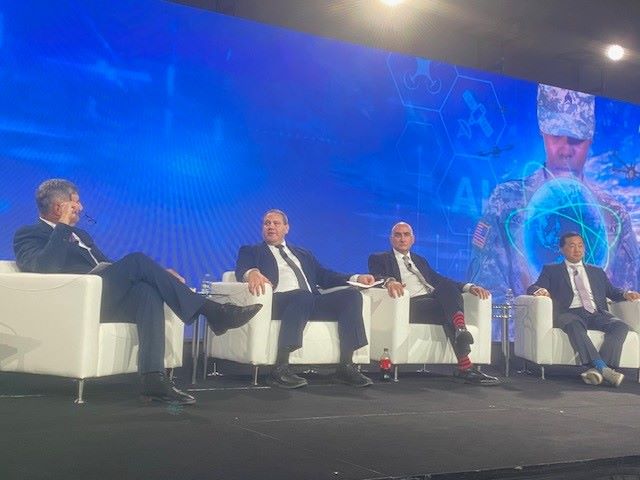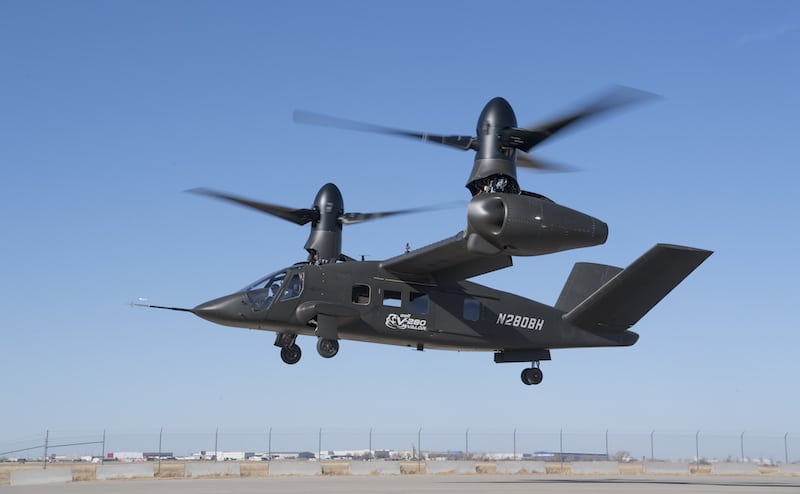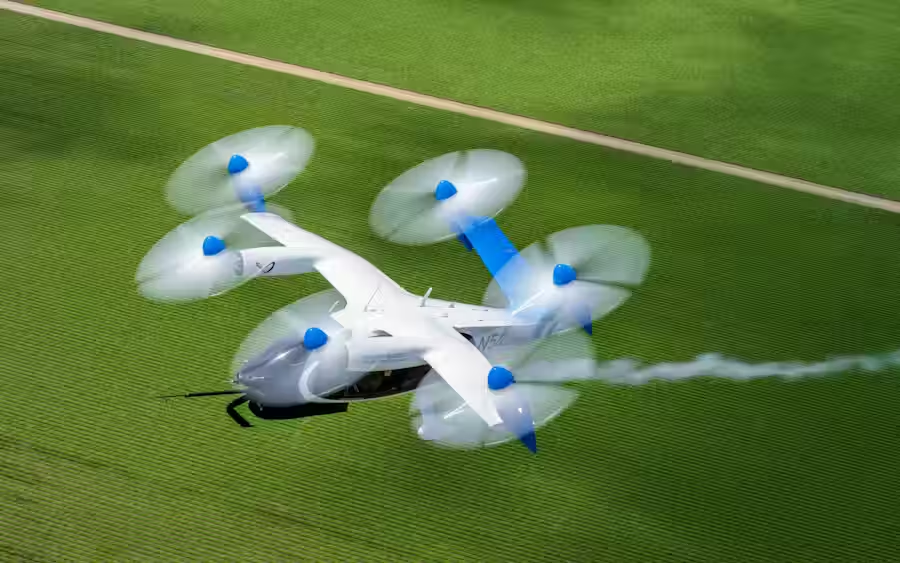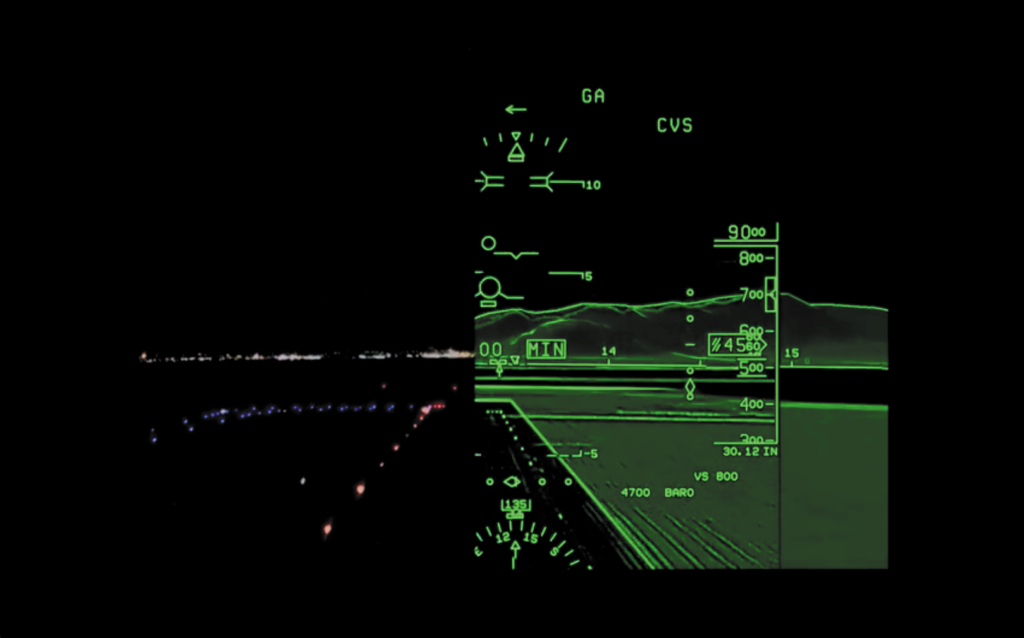
Part One in a series looking at the status of Enhanced Flight Vision Systems, which provide greater situation awareness and improved visual clarity for enhanced navigational safety and efficient operations.
An Enhanced Flight Vision System (EFVS) uses high-tech imaging sensors installed on the nose of an aircraft to capture and provide real-time, clear images of an aircraft’s forward external environment . This image is then displayed to pilots using a head-up display (HUD) or an equivalent display to present aircraft information, flight symbology or an electronic real-time sensor image to aid situational awareness. Imaging sensors can be forward-looking infrared, millimeter wave radiometry, millimeter wave radar, low-light level image intensification or other real-time imaging technologies.
EFVS’ suite of technologies improves aircraft safety by enabling operational improvements in low-visibility operations. With it, pilots can navigate accurately and make informed decisions. During many types of weather conditions, EFVS can provide a view of the external scene using thermal contrast, when the naked eye is not able to do so due to obscuring clouds, fog, snow, haze, smoke, smog, darkness or other elements. While EFVS minimizes delays and prevents aircraft from being rerouted; more importantly, it lowers the risk of runway incursions and excursions.
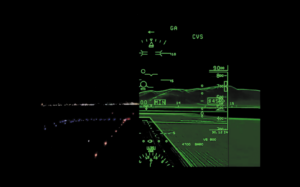
Collins Aerospace Combined Vision Systems (CVS) seamlessly blend to provide a holistic view of the environment, high-fidelity flight information and a wider field of view to lessen pilot workload and improve critical decision making. (Photo courtesy of Collins Aerospace)
In 14 CFR § 1.1, the Federal Aviation Administration defines enhanced flight visibility as the average forward horizontal distance, from the cockpit of an aircraft in flight, at which prominent topographical objects may be clearly distinguished and identified by day or night by a pilot using an enhanced flight vision system.
Gang He, senior technical fellow at Aerospace Advanced Technology, Honeywell, Morris Plains, N.J., says large cabin business jet OEMs were the first adopters of this technology but “Now, other business jet segments and large transport OEMs are increasingly seeing the value that EFVS brings to operators and looking for ways to integrate it onto their platforms.”
Dror Yahav, chief executive officer at Universal Avionics, Tucson, Ariz., says EFVS have been in development since 2001, originally used in military operations and backed by generations of expertise from his parent company Elbit Systems Ltd.
“Universal Avionics has made groundbreaking advancements to the technology with the introduction of ClearVision, a complete gate-to-gate visibility solution and the first wearable EFVS certified for the commercial aviation market. Its SkyLens Head-Wearable Display (HWD) has altered the enhanced vision market, increasing availability for all aircraft types and enabling new functionality for pilots.”
The following systems do not meet the equipment requirements of an EFVS eligible to conduct operations:
- An image presented on a Head-Down Display (HDD)
- An image displayed on a HUD without symbology or guidance information
- A Synthetic Vision System (SVS)
- A Synthetic Vision Guidance System (SVGS)
- A Night Vision Imaging System (NVIS) / Night Vision Goggles (NVG)
Equipping one of these systems alone will not allow operators to benefit from the features of a full EFVS system.
The EFVS Market
The EFVS market is experiencing significant growth. According to a research report titled “EFVS market Analysis: Industry Size, Share, Research Report, Insights, COVID-19 Impact, Statistics, Trends, Growth and Forecast 2024-2032” by Torrance, Calif-based Markwide Research, the market is being driven by:
- Advancements in aviation technology and the increasing demand for enhanced safety and operational efficiency in the aviation industry.
- The rising number of flight operations, the need to mitigate the risks associated with low-visibility conditions, and the continuous advancements in sensor technologies.
- Ongoing advancements in sensors, cameras and display technologies are facilitating the development of more sophisticated and reliable EFVS solutions.
- Aviation authorities and regulatory bodies are increasingly recognizing the benefits of EFVS and implementing regulations that mandate their use in certain flight operations, driving market growth.
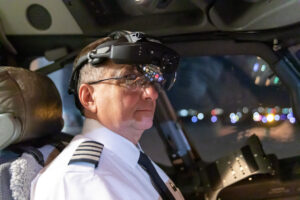
Boeing 737 Aircraft pilot operates head-up with Universal Avionics SkyLens Head-Wearable Device (HWD). (Photo courtesy of Universal Avionics)
The report does list EFVS market restraints:
- High implementation costs: The initial investment and installation costs associated with EFVS solutions can be substantial, posing a challenge for smaller aviation operators and airlines.
- Integration challenges: Integrating EFVS systems with existing avionics and flight management systems can be complex and time consuming, hindering market growth.
- Limited awareness and training: Lack of awareness about EFVS benefits and limited pilot training on EFVS operations and functionalities may restrain market expansion.
- Regulatory challenges: Differences in EFVS regulations across different regions and countries can create challenges for manufacturers and operators, hampering market growth.
- Technological limitations: Despite advancements, EFVS technologies may have limitations in extreme weather conditions, which may impact their effectiveness.
In another market report titled “Enhanced Flight Vision Systems (EFVS) Market Research Report” by New York City-based Market Research Future, the EFVS market Size was valued at USD 0.2 billion in 2023. The EFVS market is projected to grow from USD 0.214 Billion in 2024 to USD 0.3211 billion by 2032, exhibiting a compound annual growth rate (CAGR) of 7.00% during the forecast period (2024 – 2032).
This report states the EFVS market consists of established major companies such as Honeywell International Inc., Elbit Systems Ltd., and L3Harris Technologies Inc. In a bid to capture a larger market share, companies in the EFVS space are strategically diversifying their product portfolios. Some are focusing on the integration of artificial intelligence and machine learning algorithms to enhance image processing capabilities. Others are leveraging partnerships with aviation authorities and regulatory bodies to streamline the certification process for EFVS-equipped aircraft. Furthermore, companies are investing in marketing initiatives to create awareness among aviation stakeholders about the benefits of EFVS, emphasizing its contribution to safety, reduced operational costs, and improved overall flight experience.
EFVS Improvements
In the past few years, numerous EFVS advancements have improved the functionality, reliability and safety of airborne operations. For example, Charlotte, N.C.-based Collins Aerospace’s imaging sensors have become more sensitive to include infrared and low-light cameras, providing exceptional clarity in all weather and visibility conditions.
New sensor technology (e.g., millimeter wave) can enable better image capture and also compute capability, whether embedded in the sensor or elsewhere in the system. “New vision sensors, beyond infrared cameras, are needed to support all weather conditions operations, as airports move to LED and away from incandescent lighting,” says Ankur Kumar, senior director, Integrated Avionics, Honeywell Aerospace Technologies, Phoenix, Ariz. “The thermal footprint from incandescent bulbs, which enables infrared to provide the visual advantage over natural vision in low visibility conditions, is not the same with LED. The visual advantage of infrared vision systems for the most part is lost in weather conditions because the thermal signature from the incandescent lights is lost. While the infrared sensors will still enhance visibility during night visual meteorological conditions (VMC), for the most part it will provide no advantage during any bad weather or instrument meteorological conditions (IMC) as compared to human vision.”
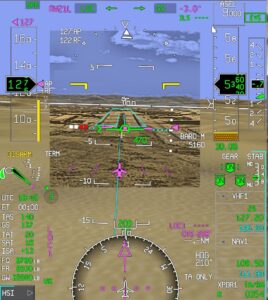
EFVS helps pilots navigate accurately and make informed decisions. (Photo courtesy of Honeywell Aerospace Technologies )
Sensors based on active or passive millimeter wave technologies can provide better weather penetration capabilities; however, Kumar believes they are currently limited by image resolutions, performance issues, weight, cost and other factors for commercial applications. “On-going development efforts are looking into sensor data fusion between camera and radar detection technologies in order to take advantage of combined capabilities of multiple types of sensor systems to achieve visual advantage for low-visibility operations.”
Kumar adds that he has seen, “Advances in EFVS through fusion use of multiple camera sensors to include more of the near visible and infrared spectrum. In addition, we’ve also seen higher resolution in the displays.”
Collins Aerospace has been coordinating with regulatory bodies to further expand the operational usefulness of EFVS by expanding certification to include use during the taxi, takeoff and landing phases of flight. “EFVS already provides for lower minima in the landing phase of flight, but the next step is to bring the benefits to takeoff and taxi,” Craig Brown, senior director, vision systems programs at Collins Aerospace says.
HUD technology was previously unaffordable, difficult to install and designed only for large cockpits due to space requirements. But by adding a wearable display, “Universal Avionics made EFVS available to all airplanes because the HUD is not installed—it is worn by the operator,” Yahav says. “No longer limited to a fixed, forward-looking display, Universal has developed many new applications such as panoramic synthetic vision, with surrounding traffic inputs and conformal traffic to follow. Our EVS has also evolved from a single infrared sensor to a multiple-sensor solution, combining visible light, near IR, and longwave infrared inputs to create a complete picture for operators. The EVS-5000 multispectral camera provides significantly improved image capture, detects LED lights, and penetrates weather in a way that no other technology does at 50% visual advantage, a first in the market.”
The post Looking into Today’s Enhanced Flight Vision Systems appeared first on Avionics International.
—————
Boost Internet Speed–
Free Business Hosting–
Free Email Account–
Dropcatch–
Free Secure Email–
Secure Email–
Cheap VOIP Calls–
Free Hosting–
Boost Inflight Wifi–
Premium Domains–
Free Domains
